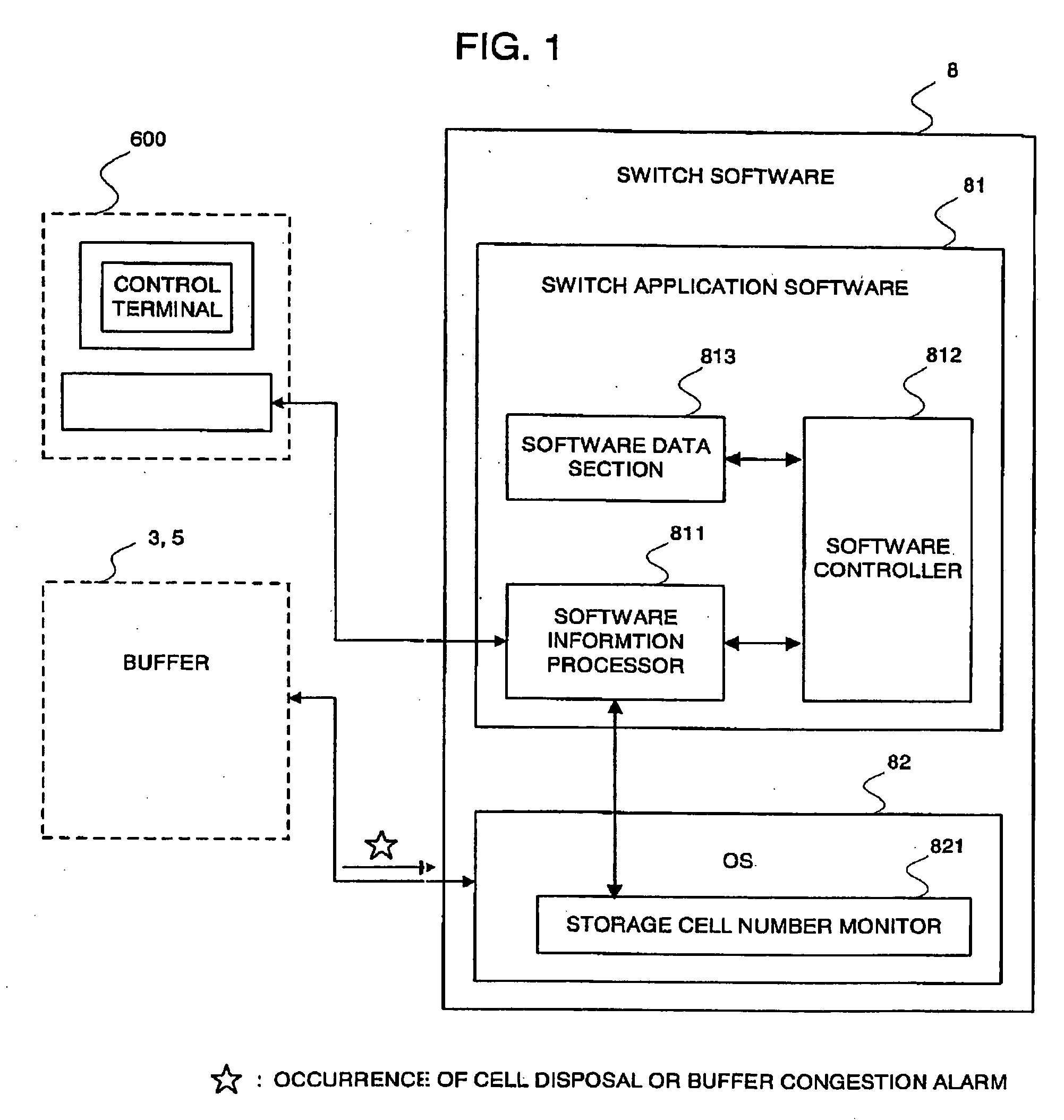System and method of avoiding cell disposal in buffer
a cell and buffer technology, applied in the field of system or method of avoiding cell disposal in a buffer, can solve the problems of conventional system not being able to dynamically control congestion, unable to avoid cell disposal in advance, and system is not applicable to the input buffer-type atm switch or the output buffer-type atm switch
- Summary
- Abstract
- Description
- Claims
- Application Information
AI Technical Summary
Benefits of technology
Problems solved by technology
Method used
Image
Examples
Embodiment Construction
[0040] Embodiments of the present invention will be described below with reference to the attached drawings.
[0041]FIG. 2 is a block diagram illustrating the system configuration of a switch in an input / output buffer format, according to an embodiment of the present invention. This system comprises a switch 500 and a control terminal 600 (maintenance terminal) for performing an input / output operation during maintenance.
[0042] The control terminal 600 is used for the purpose of the maintenance for a switch. The control terminal 600 is a terminal of informing an operator of information for maintenance and implements, if necessary, various settings. A personal computer may be connected as the control terminal 600.
[0043] The switch 500 includes a switch controller 1, a line section 2 having plural input line ports, a buffer 3 having plural QoS buffers on the input side, a core 4 acting as a core switch, a buffer 5 having plural QoS buffers on the output side, and a line section 6 havi...
PUM
 Login to View More
Login to View More Abstract
Description
Claims
Application Information
 Login to View More
Login to View More - R&D
- Intellectual Property
- Life Sciences
- Materials
- Tech Scout
- Unparalleled Data Quality
- Higher Quality Content
- 60% Fewer Hallucinations
Browse by: Latest US Patents, China's latest patents, Technical Efficacy Thesaurus, Application Domain, Technology Topic, Popular Technical Reports.
© 2025 PatSnap. All rights reserved.Legal|Privacy policy|Modern Slavery Act Transparency Statement|Sitemap|About US| Contact US: help@patsnap.com



